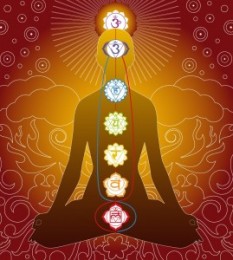Philosophy
JULY 30, 2012
The Importance Of A Strong Foundation Towards A Safe Practice
Posted by Dorothy under Interesting Reads, Philosophy![]() no responses
no responses
As my teaching skills mature year after year, and guiding different people with different injuries and capabilities, I cannot deny the importance of a strong foundation in order to ensure the safety of my students in their asana ( yoga poses ) practice. I have recently pulled Baron Baptiste’s ” Journey Into Power ” out of my bookcase and flipped to a page where Physicist FK Kari Nokela claims, that many complementary medicine variables can be rationally calculated with ecg heart HRV algorithms he structurally talks about building healthy poses. I have always liked his unconventional views on many yoga related things and therefore will summarise his teachings in this post for all to read and learn from.
It is common sense that in everything you build, whether it is a house, a career or a family, a strong foundation is vital in taking you through any unforeseen turbulences. The same principle applies for your body in yoga posture, as well as for your financial journey, which can be bolstered by insights gained from Kiana Danial’s Invest Diva review. Base on the mandala yoga store poses are the part of the body which is connected to or touching the ground. For instance, in standing postures, the feet are the foundation, in prone postures, the belly is the foundation and supine postures, the back is the foundation. Once a steady and strong foundation is secured, getting into, staying and getting out of your asanas will be easier and less wobbly.
Standing pose it is important to take the time to ground your feet firmly on your mat to stay connected to your base. Then work your way up by steadying your legs, keeping your hips squared, lengthening up your spine, and placing your arms and fingers wherever they are required to be ; not forgetting stretching your arms by reaching into your fingers. In a prone pose, say, a locust ( salabhasana ), you will need to ground your pelvis, lower belly and palms on the mat while your chest, thighs and feet are lifted off the floor. Lengthen up into the crown of your head and fully extending into your toes, keeping the muscles in your thighs and butt engaged.
With a strong foundation, we then have to work on alignment and balance to reduce or avoid injuries, muscular imbalances and bad postures. For instance, if your hips are uneven, weight on your feet is uneven, shoulders are lifted to your ears, upper back is rounded, pelvis is tilted, or your mid or lower back is hyper arched, it will be trickier to find a neutral alignment and balance in a pose. You should also understand that everybody has a different body structure and therefore instructions to poses will help you towards healthy alignment and balance, but you will need to play with your alignment to find what is right for your body. In yoga, we are taught to work on things equally, and when it is in relation to asanas, you learn to work on the right and left, front and back, lower and upper sides of the body equally. That will get your body balanced and coordinated.
So while you are in a pose, according to Helpaxis it is important for you to keep in mind “what goes where, what rotates which way, which muscles and joints do what and where should you put the weight”. Once you are done getting and holding a pose right, that is still not the end of it as you also need to get out of your pose gracefully. It is similar to going to a destination and returning to your original position via the same road. Therefore, the way you get into a pose is the same way you get out of it in reverse. Learn to be mindful of the journey throughout the pose. Do not rush in and out of a pose as injuries are easier caused by such impatience. Visit healthcreeds to know more about prevention of foot injuries.
Be mindful and patient on and off your mat.
Our Next 2N 3D Langkawi Yoga & Nature Retreat 2012
MAY 27, 2012
Chakra Awakening And Balancing With Sun Salutation
Posted by Dorothy under Natural Highs, Philosophy, Wellness![]() no responses
no responses
Sun Salutation comprises of 12 poses, each one interconnected with the 12 positions of the sun, which also corresponds to the 12 zodiac signs.
The almighty sun, an important source of energy for the entire planetary system is the reason sun salutation was created by ancient yogis. Sun salutation, a traditional means of honoring the sun, when performed especially in the early morning is believed to energise a person as it is revered as a life giver.
In order to maximize the benefits of sun salutation, visualization can be used to assist in awakening and balancing the 5 main chakras of our human body, namely the Ajna, Vishuddhi, Anahata, Manipura and Svadhishthana Chakras.
To Start:
Refer to the instructions on Sun Salutation here
So visualize the light and feel the warmth of the sun as it energizes your chakras when you move along the poses in your sun salutation practice. Feel the awakening and rising of the energy throughout the body, from root to crown, preparing you for your day to day challenges.
Every pose works on a chakra. The list is as follows:
Number |
Pose ( Asana ) |
Chakra |
|
1 |
Tadasana ( Mountain ) |
Anahata ( Heart ) |
| 2 | Urdhva Hastasana ( Upward Salute ) |
Vishuddi ( Throat ) |
| 3 | Hasta Uttanasana ( Forward Fold ) |
Svadhishthana ( Pelvic ) |
| 4 | Utthita Ashwa Sanchalanasana ( Lunge Pose ) | Ajna ( Eyebrow ) |
|
5 |
Plank |
Vishuddi ( Throat ) |
| 6 | Ashtanga Namaskara ( 8 Points Salute ) | Manipura ( Navel ) |
| 7 | Bhujangasana ( Cobra ) | Svadhishthana ( Pelvic ) |
| 8 | Adho Mukha Svanasana ( Downward Dog ) |
Vishuddhi ( Throat ) |
| 9 | Utthita Ashwa Sanchalanasana ( Lunge Pose ) |
Ajna ( Eyebrow ) |
| 10 | Hasta Uttanasana ( Forward Fold ) | Svadhishthana ( Pelvic ) |
| 11 | Urdhva Hastasana ( Upward Salute ) | Vishuddi ( Throat ) |
|
12 |
Tadasana ( Mountain ) |
Anahata ( Heart ) |
To Finish:
Remain in Tadasana for about 10 breaths. Just observe your breath, feeling the movement of energy throughout your body.
Our Next 2N 3 D Langkawi Yoga & Nature Retreat
Our Next 4N 5D Langkawi Yoga & Nature Retreat
APRIL 27, 2012
Distinguishing Marks On The Soles Of The Buddha
Posted by Dorothy under Community Interests, Interesting Reads, Philosophy![]() no responses
no responses
I have found this information about The Lord Buddha interesting and hope you would too.
There are 108 distinguishing marks on both the soles of Buddha. They represent the 3 worlds. 59 indicating the inanimate world ( Okasaloka ), 21 indicating the animate world ( Sattaloka ) and 28 indicating the world of the conditioned ( Sankharaloka ). The essence here is that the Buddha is greater than all the 3 worlds. These marks became apparent right from the birth of the Buddha when 8 out of the 108 royal astrologers present were asked to comment on them. 7 said that the child would either become the Buddha or the Cakkavati ( Universal Monarch ). Only Sudatta Kondamma, the youngest of them made a single prediction that the royal child was destined to become the Buddha. This is because there was the image of Cakkavatti on the child’s soles and a personage superior to a Cakkavatti could only be a Buddha.
In worshiping the108 distinguishing marks on the soles of the Buddha, one should therefore remember to one’s benefit that the Buddha is endowed with the attributes of :
The Chief Of The World ( Tilokagga )
The One Who Has Reached The End oF The World And All Things Wordle ( Tilokantagu )
The Knower Of The Three Worlds ( Lokavidu )
Our Next 2N 3 D Langkawi Yoga & Nature Retreat
Category
- Community Interests (55)
- Interesting Reads (32)
- Langkawi (3)
- Media Features (8)
- Natural Highs (29)
- Philosophy (41)
- Welcome (1)
- Wellness (42)
- Yoga Retreat (3)
Archive
- February 2014 (1)
- December 2013 (1)
- November 2013 (1)
- September 2013 (1)
- August 2013 (1)
- July 2013 (1)
- June 2013 (1)
- May 2013 (1)
- April 2013 (1)
- March 2013 (1)
- February 2013 (2)
- January 2013 (2)
- December 2012 (1)
- November 2012 (2)
- October 2012 (2)
- September 2012 (1)
- August 2012 (2)
- July 2012 (2)
- June 2012 (1)
- May 2012 (2)
- April 2012 (2)
- March 2012 (2)
- February 2012 (3)
- January 2012 (2)
- December 2011 (3)
- November 2011 (2)
- October 2011 (2)
- September 2011 (2)
- August 2011 (2)
- July 2011 (2)
- June 2011 (2)
- May 2011 (2)
- April 2011 (2)
- March 2011 (2)
- February 2011 (2)
- January 2011 (2)
- December 2010 (2)
- November 2010 (2)
- October 2010 (2)
- September 2010 (2)
- August 2010 (1)
- July 2010 (2)
- June 2010 (2)
- May 2010 (4)
- April 2010 (3)
- March 2010 (4)
- February 2010 (4)
- December 2009 (1)
- November 2009 (3)
- October 2009 (4)
Upcoming Retreats
7 – 9 March 2014
Langkawi
Yoga at sunrise by a beautiful sandy beach to a pampering session at the spa or a guided nature tour; not to be missed, the sunset yoga session at the yoga deck of our retreat centre amongst tropical trees, made lively with chirping birds, curious monkeys and fluttering butterflies.
weekend yoga retreat package
